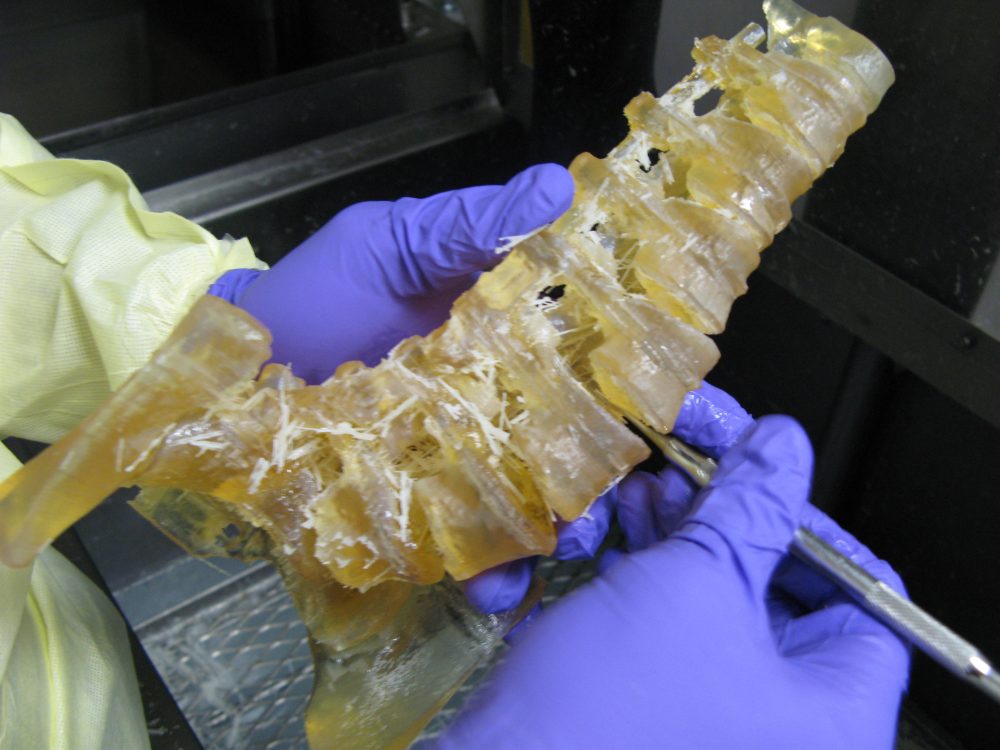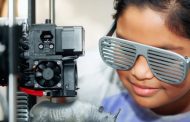One day in the not-too-distant future, your surgeon might be able to give you new bones, joints, even soft-tissue organs that were “printed” in-house. It sounds like something out of “Westworld,” the HBO sci-fi series where humanoid robots are 3D-printed. But hospitals are working on the cutting edge of medical innovation to make it a reality. Medical 3D printing.
At the University of Michigan in Ann Arbor, Mich., doctors and researchers led by otolaryngologist Glenn Green, M.D., are working on nearly 30 medical 3D projects that are customized to help individual patients.
UM’s most successful implantable 3D procedure is a medical 3D-created biodegradable splint device to treat a rare life-threatening airway disorder that mostly occurs in babies called tracheobronchomalacia. The disorder causes the windpipe to periodically collapse and prevents normal breathing.
The manufactured splint device using one of UM’s 30 3D printers is sewn around a floppy airway area in the neck to provide support and protection during airway growth. Over three years, the splint is absorbed by the body. UM has treated a total of 15 patients from the ages of three months up to 70, said Green, who practices at UM’s C.S. Mott Children’s Hospital.








